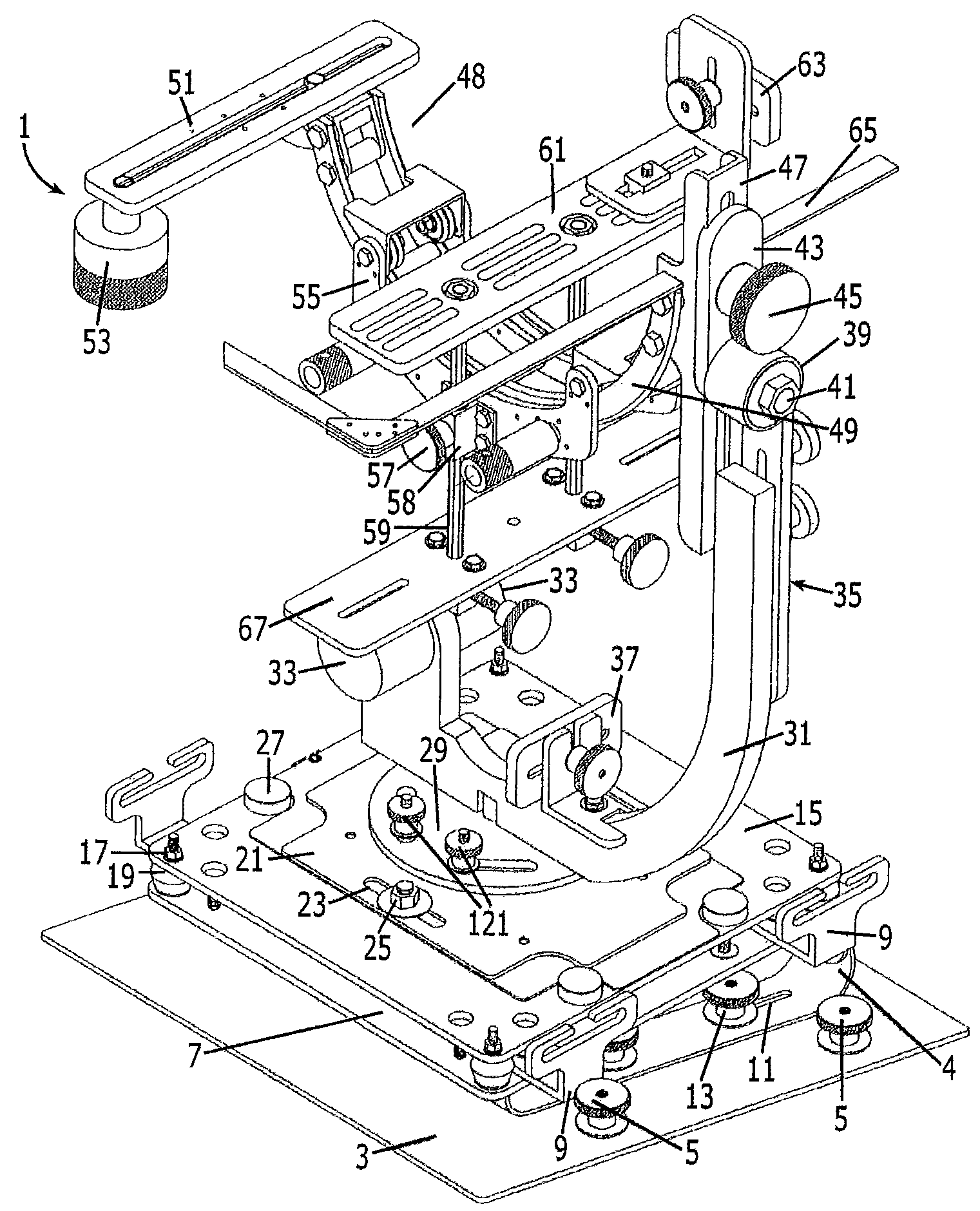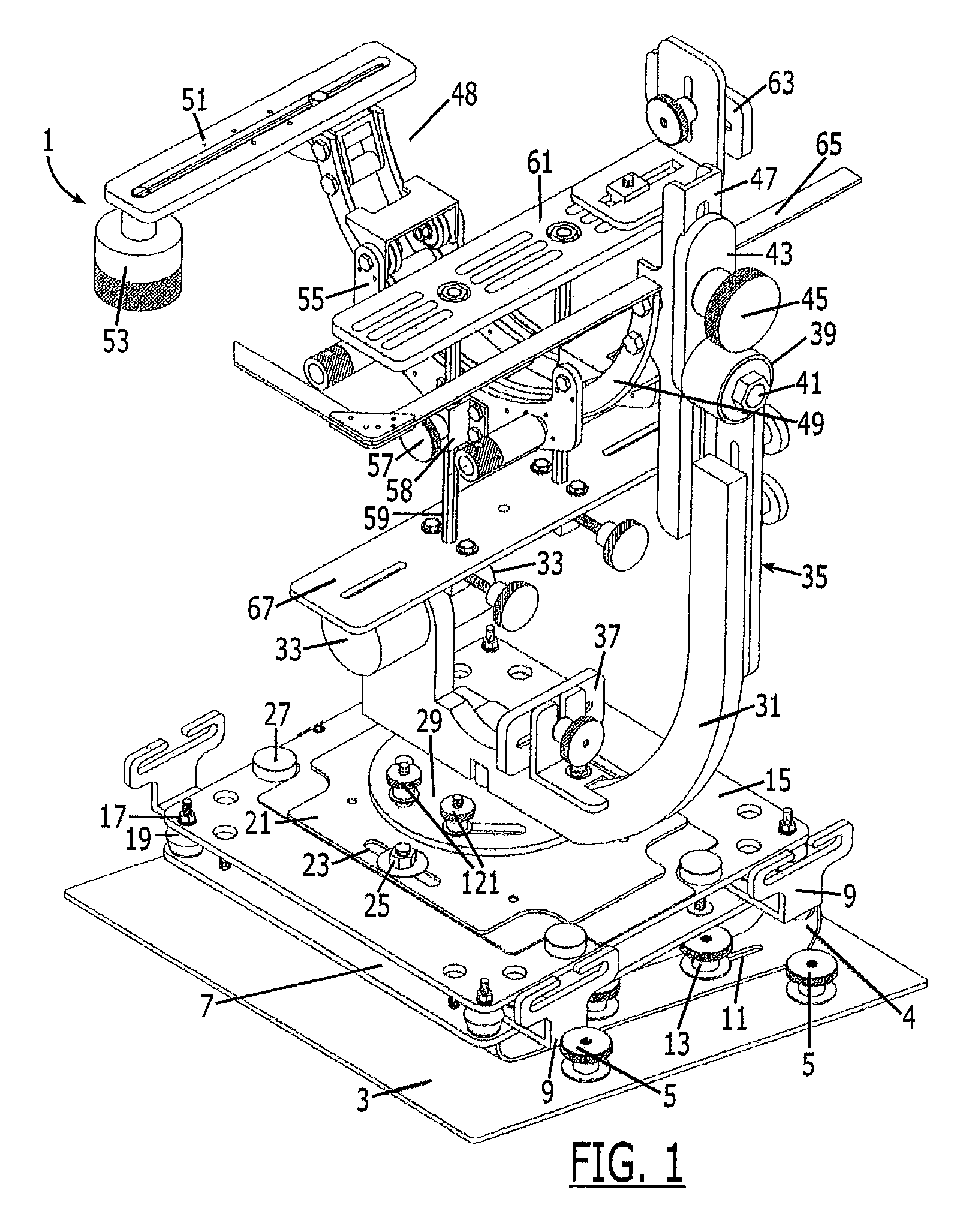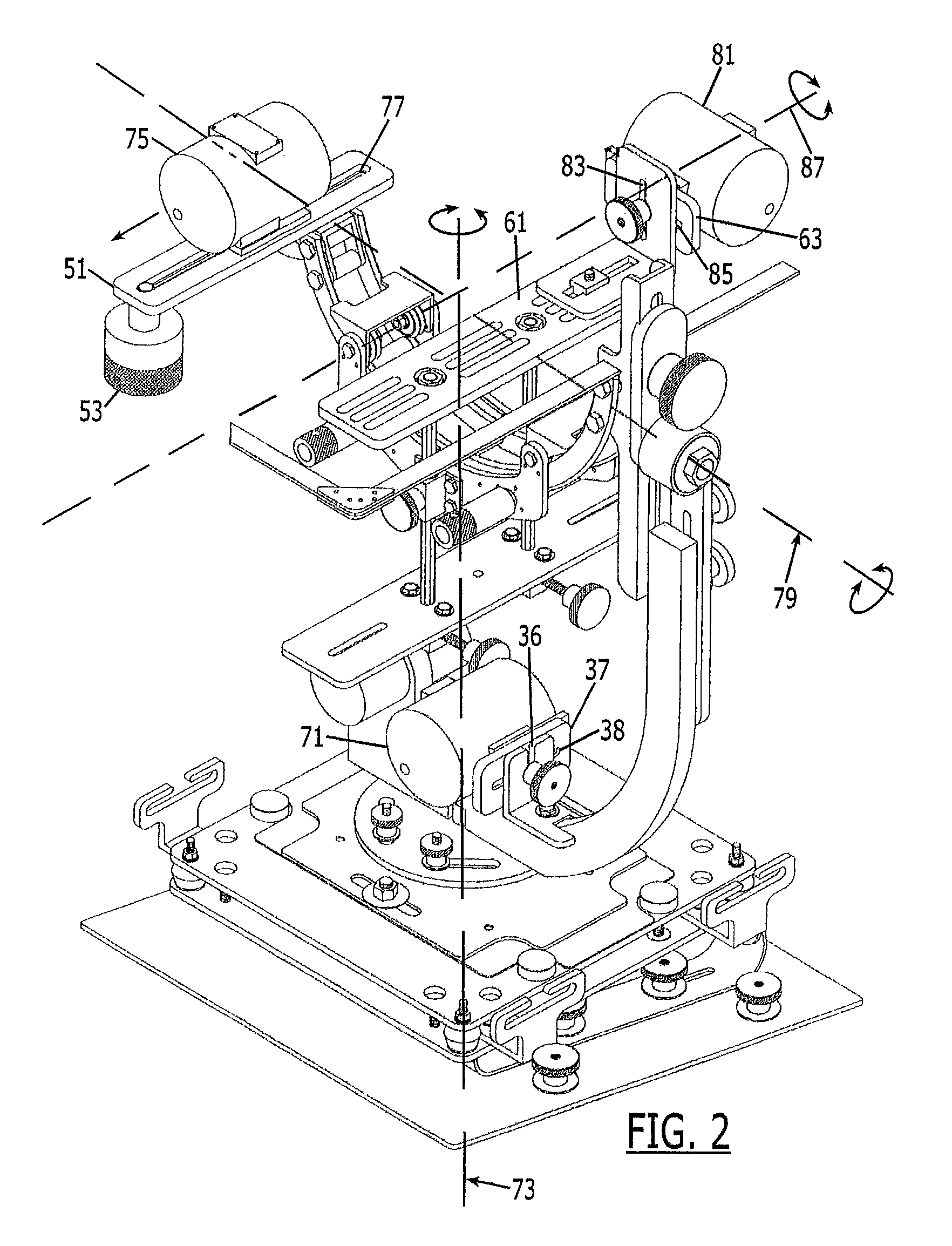Aerial video mount
- Summary
- Abstract
- Description
- Claims
- Application Information
AI Technical Summary
Benefits of technology
Problems solved by technology
Method used
Image
Examples
Embodiment Construction
[0017]As shown in FIG. 1, the preferred embodiment of the mount 1 comprises a seat plate 3 to which are attached latch knobs 5 used to secure the seat plate 3 to the seat of a vehicle or aircraft enabled to accept the latching mechanism. The seat plate 3 supports the center plate 7 to which tie down brackets 9 are attached to enable the mount 1 to be attached to a seat using straps such as a seat belts. The position of the center plate 7 can be adjusted relative to the seat plate 3 by an arrangement of slots 11 and lock knobs 13. One end of the center plate 7 can also be elevated with respect to the seat plate 3 by an adjustable level support 4. The base plate 15 is attached to the center plate 7 by fasteners 17 which are attached to vibration isolators 19. The purpose of the vibration isolators 19 is to reduce vibration transmitted from the aircraft or vehicle to the base plate 15 and components resting on the base plate. The vibration isolators can be made of various material incl...
PUM
 Login to View More
Login to View More Abstract
Description
Claims
Application Information
 Login to View More
Login to View More - R&D
- Intellectual Property
- Life Sciences
- Materials
- Tech Scout
- Unparalleled Data Quality
- Higher Quality Content
- 60% Fewer Hallucinations
Browse by: Latest US Patents, China's latest patents, Technical Efficacy Thesaurus, Application Domain, Technology Topic, Popular Technical Reports.
© 2025 PatSnap. All rights reserved.Legal|Privacy policy|Modern Slavery Act Transparency Statement|Sitemap|About US| Contact US: help@patsnap.com



